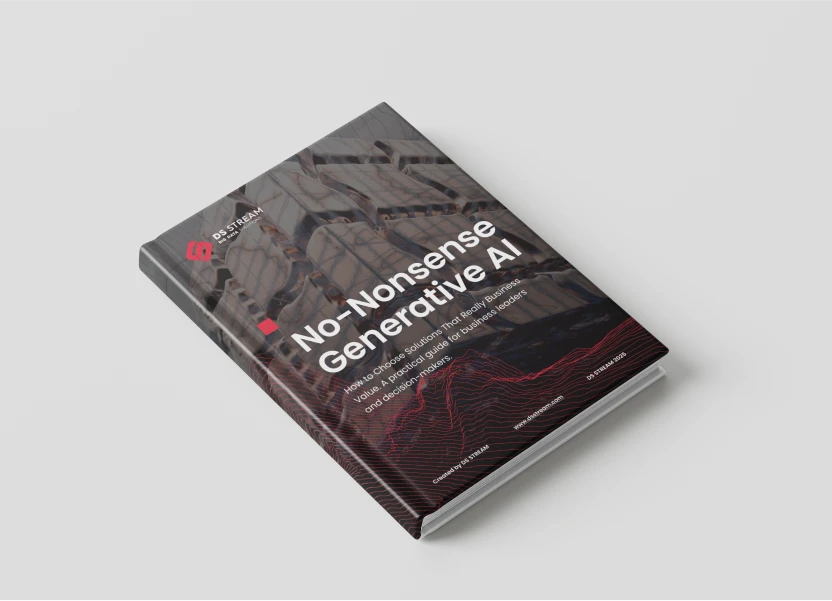Die Landschaft von Künstlicher Intelligenz und Maschinellem Lernen (AI/ML) hat sich in den letzten Jahren dramatisch verändert.
Automatisierte Machine-Learning-Plattformen (AutoML) sind zu unverzichtbaren Werkzeugen geworden, um KI-Fähigkeiten zu demokratisieren. In dieser Analyse werden drei führende Plattformen untersucht: DataRobot, H2O.ai und Google Cloud AutoML. Zielgruppe sind IT-Spezialisten und Manager, die fundierte strategische Entscheidungen treffen wollen.
Jede Plattform repräsentiert einen anderen Ansatz zur Automatisierung von KI:
- Google Cloud AutoML legt den Schwerpunkt auf Einfachheit und Zugänglichkeit über eine No-Code-Oberfläche. So können auch Business-Analysten und Entwickler ohne Data-Science-Hintergrund leistungsfähige Modelle erstellen.
- H2O.ai kombiniert die Flexibilität von Open Source mit Enterprise-Funktionalität und bietet volle Kontrolle und Anpassbarkeit für technisch versierte Teams.
- DataRobot versteht sich als End-to-End-Plattform und automatisiert den gesamten ML-Lebenszyklus – von der Datenaufbereitung bis hin zu Monitoring und Governance.
Die Wahl hängt ab von technischer Reife, Budget, vorhandener Infrastruktur, regulatorischen Anforderungen und der langfristigen KI-Strategie.
1. Architektur und Kernfunktionen
Google Cloud AutoML – Einfachheit durch Automatisierung
AutoML innerhalb von Vertex AI nutzt Googles Infrastruktur und Neural Architecture Search (NAS), um automatisch optimale neuronale Netze zu entwerfen. Es unterstützt Tabellendaten, Bilder, Text und Videos.
Stärken: Nahtlose Integration mit BigQuery, Cloud Storage u. a., schnelle Bereitstellung als skalierbare REST-APIs.
Schwächen: Begrenzte Möglichkeiten für Feature Engineering und detaillierte Modellkontrolle („Black-Box-Charakter“).
H2O.ai – Open-Source-Flexibilität trifft Enterprise-Power
- Kern: H2O-3, ein hoch performanter Open-Source-ML-Engine mit GBM, XGBoost, DRF, GLM, neuronalen Netzen u. v. m.
- Kommerzielle Erweiterung: Driverless AI mit automatischem Feature Engineering, Erklärbarkeit (SHAP, PDP etc.) und hoher Modellgenauigkeit.
Stärken: Kombination aus vollständiger Kontrolle im Code-first-Ansatz und automatisierter Modellgenerierung.
Schwächen: Steile Lernkurve, auch Driverless AI für erfahrene Data Scientists gedacht.
DataRobot – ML-Lifecycle-Management End-to-End
- Initialisiert automatisch Modell-Wettbewerbe („Blueprints“) mit Algorithmen wie scikit-learn, LightGBM, TensorFlow.
- Umfangreiche MLOps-Funktionen: Monitoring, Drift-/Bias-Erkennung, automatisches Retraining.
- Stärken in Zeitreihenprognosen und erklärbarer KI.
Schwächen: Hohe Kosten, weniger Flexibilität im Vergleich zu H2O.ai.
2. Preismodelle und TCO
- Google AutoML: Pay-as-you-go, niedrige Einstiegskosten, möglich hohe Kosten bei großem Volumen.
- H2O.ai: H2O-3 kostenlos, Driverless AI ~390.000 USD/3 Jahre.
- DataRobot: Enterprise-Subskription ~50.000–250.000 USD pro Jahr, median ~180.000 USD.
3. Algorithmen & Datenverarbeitung
- H2O.ai: größte algorithmische Vielfalt (GBM, XGBoost, RF, GLM, DNN, Clustering, PCA usw.).
- DataRobot: testet Hunderte Algorithmen automatisch in Blueprints.
- Google Cloud AutoML: primär neuronale Netze und NAS, weniger Vielfalt, dafür optimiert für Deep Learning.
Feature Engineering:
- H2O.ai (Driverless): führend, generiert Hunderte/Mill. Features.
- DataRobot: integriert, solide, aber weniger komplex.
- Google AutoML: Basis-Vorverarbeitung, dafür einfach.
4. Integration & MLOps
- DataRobot: umfassende REST-APIs, CI/CD, MLOps Agents, Monitoring.
- H2O.ai: flexible Integration via MOJO/POJO, Spark, Hadoop, Kubernetes/Docker.
- Google AutoML: nahtlose Verbindung mit Vertex AI, One-Click-Deployment.
5. Skalierbarkeit & Performance
- Google Cloud AutoML: automatisches Skalieren über globale Google-Infrastruktur.
- H2O.ai: JVM-basiert, verteilt, GPU-Integration via RAPIDS, für Big Data.
- DataRobot: Kubernetes, Hybrid-Deployments, hochverfügbar und skalierbar.
6. Sicherheit & Compliance
- Google AutoML: erbt Googles Zertifizierungen (ISO, SOC, PCI, HIPAA, GDPR).
- H2O.ai & DataRobot: On-Premises / Air-Gapped möglich, wichtig für strenge Datenhoheit.
7. User Experience
- Google AutoML: No-Code, sehr niedrige Einstiegshürde.
- DataRobot: GUI + tiefergehende Tools, für Business-Nutzer und Data Scientists.
- H2O.ai: mehrere Interfaces (H2O-3 code-first, Flow GUI, Driverless AI GUI).
8. Support & Community
- DataRobot: hoch bewerteter Enterprise-Support (4,7/5 Gartner Peer Insights).
- H2O.ai: Community für H2O-3, professioneller 24/7 Support für Driverless AI.
- Google AutoML: umfangreiche Dokumentation, global aktive Community.
9. Zukunft & Innovationstrends
- Generative AI: Integration von LLMs geplant (DataRobot, H2O.ai, Google mit Foundation Models).
- Responsible AI: Bias-Erkennung, Fairness, Modelltransparenz bei allen Plattformen im Fokus.
- Edge Deployment: H2O.ai (MOJO optimiert für Edge), DataRobot (leichte Modelle), Google Cloud (Edge/IoT-Plattformintegration).
10. Entscheidungskriterien
Google Cloud AutoML
- Für: Unternehmen mit wenig ML-Erfahrung, schnelle Resultate, limitierte Ressourcen.
- Einfach, günstig im Einstieg, GCP-Integration.
- – Wenig Kontrolle für Experten.
H2O.ai
- Für: technisch starke Teams, Projekte mit hoher Modell-Performance, Open-Source-Affinität.
- Kostenloses H2O-3, volle Flexibilität, mächtiges Feature Engineering.
- – Höhere Lernkurve, Driverless AI sehr kostenintensiv.
DataRobot
- Für: große Unternehmen, regulierte Branchen, MLOps-Needs.
- Komplettlösung im Enterprise-Umfeld, Governance, Erklärbarkeit.
- – Hohe Einstiegskosten.
Fazit
Jede Plattform bietet spezifische Stärken:
- Google AutoML: Demokratisierung von ML durch No-Code & GCP-Integration.
- H2O.ai: Maximale Flexibilität – von Open Source bis Enterprise-Power.
- DataRobot: Vollumfängliche End-to-End-Lösung inklusive Governance.
Der Erfolg hängt nicht nur von der gewählten Technologie ab, sondern auch vom Aufbau interner Kompetenzen, Governance-Strukturen und einer datengetriebenen Unternehmenskultur.




